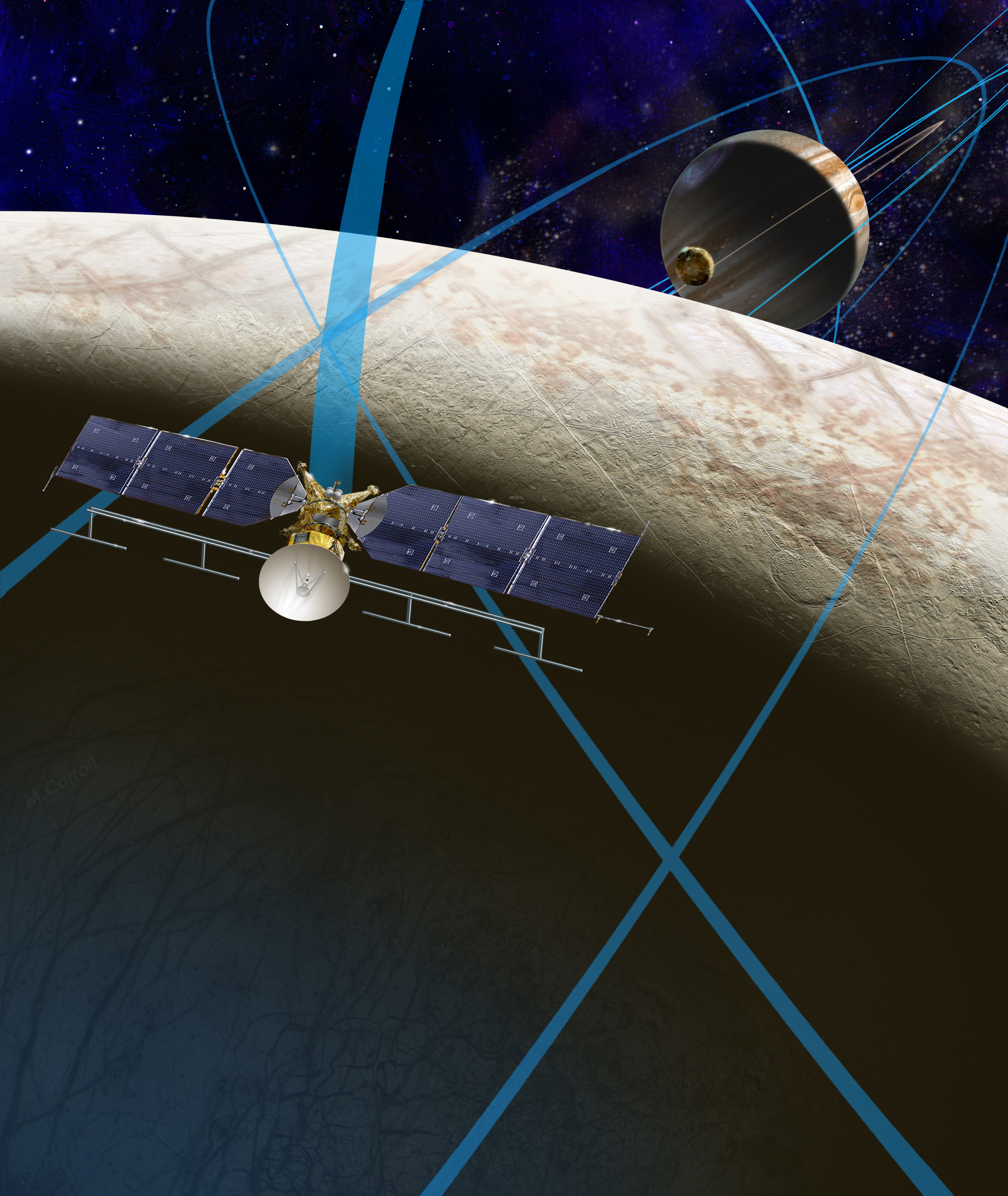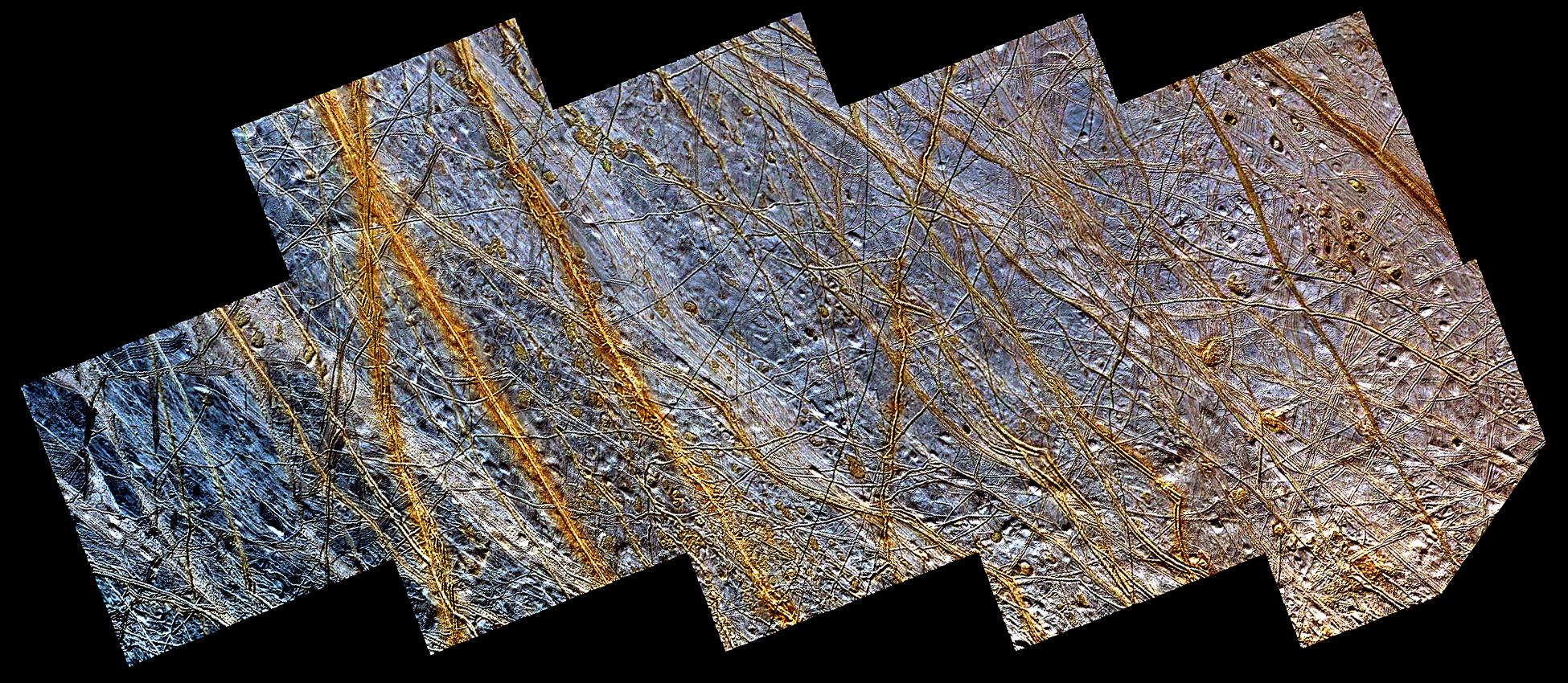Future Exploration of Europa

There
are many challenges that future
exploration missions to Europa need
to overcome.
Europa's high radiation environment,
5.4 Sv per day (more than 500,000
times more than on earth!), poses a
great challenge to future missions.
Also the low sunlight and long
distance from Earth are challenging.
Nevertheless, because of its unique
environment, Europa
is a prime candidate
for future
exploration missions for NASA and
the ESA
(European Space
Agency).
NASA
is planing a multiple flyby
mission to Europa named the
Europa Clipper. This
mission is scheduled to
launch in the early 2020s,
and will reach Europa after
a 6.5 year journey. This
mission will try to answer
many of the questions
regarding Europa's
habitability and environment.
It will measure the magnetic
fields more precisely to
understand better the ocean.
The mission will also look
closer at Europa's chemical
composition, using infrared
spectrometers. An ice
penetrating radar will
search for water close to the
surface, while high
definition camera's will
give a better look at
Europa's strange topology.
The Clipper will also take
precise measurements of
Europa's tidal flexing,
which will allow to estimate
the depth of the ice shell
and ocean better.
The European Space Agency is
also planing a mission that
will focus on Jupiter's icy
moons - JUICE, Jupiter Icy
Moons Explorer. This mission
will conduct multiple flybys
Jupiter's 3 icy moons:
Ganymede, Callisto and
Europa. Though this mission
will focus more on Ganymede
and Callisto, it will still
provide valuable information
about Europa. It's science
payload will be similar to
the clipper's, though not
identical.
|

Illustration of the Europa Clipper - NASA
|

Europa's surface feature's - NASA
Only
future mission's will allow us to
understand Europa's environment
better, and to evaluate its
habitability.
The Physics of how life works is
complex and amazing. The Physics of
space exploration and planetary
analysis is just as intriguing.
Europa provides a unique enviroment
where the two combine creating a
huge potential for future
exploration and research.
Sources and Outside
Material
Homepage
|